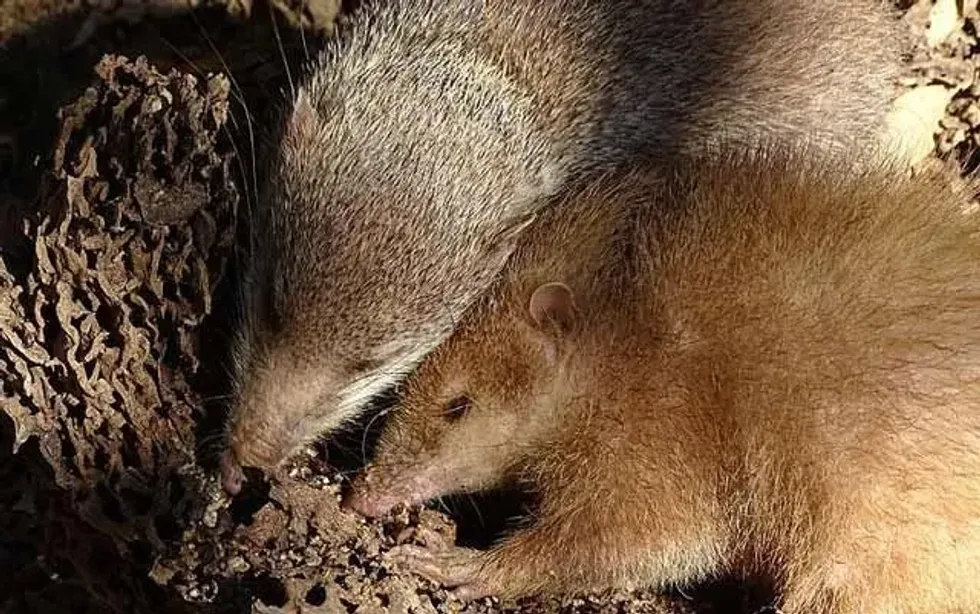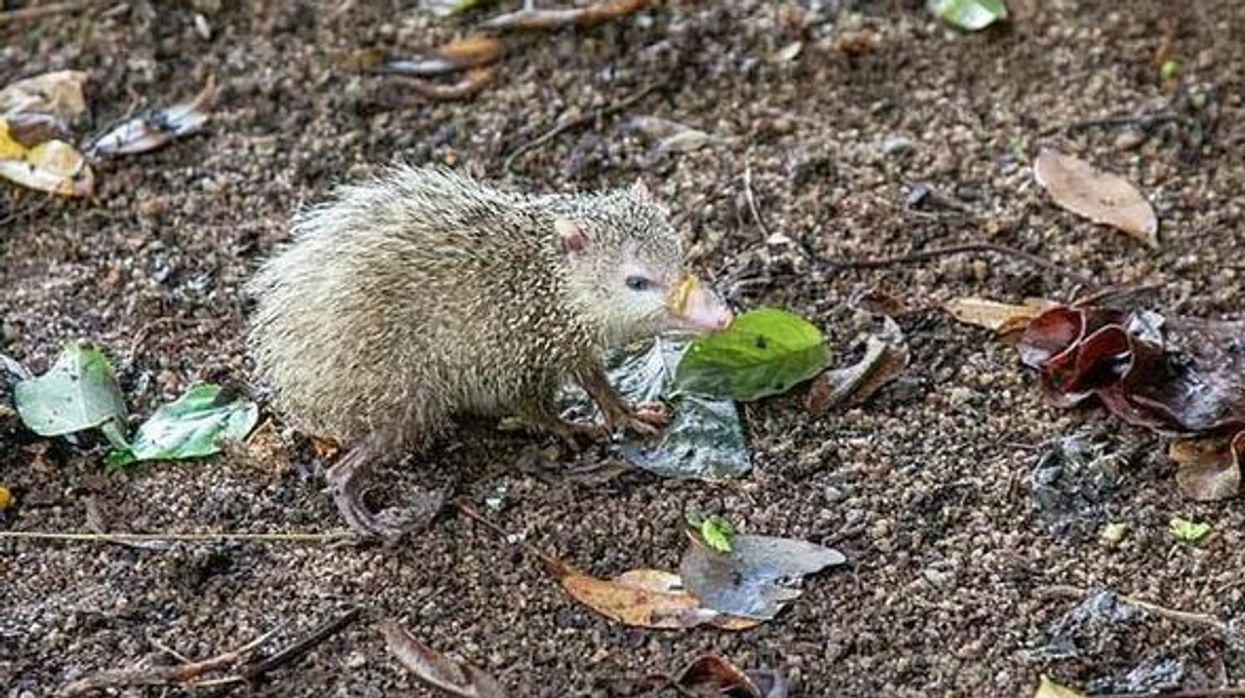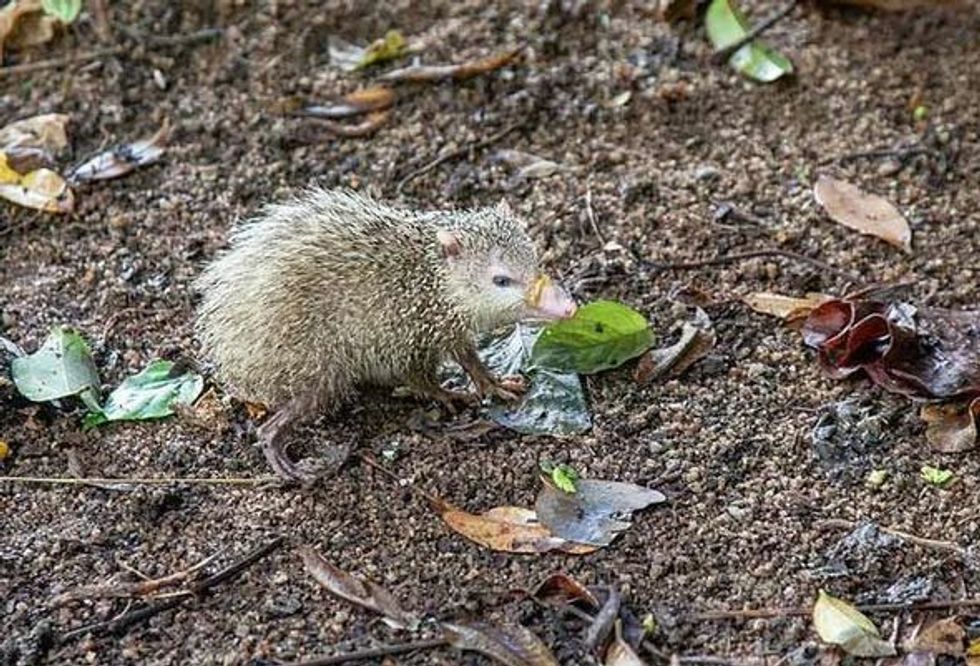Fun Tenrec Facts For Kids

Content
- What type of animal is a tenrec?
- What class of animal does a tenrec belong to?
- How many tenrecs are there in the world?
- Where does a tenrec live?
- What is a tenrec's habitat?
- Who do tenrecs live with?
- How long does a tenrec live?
- How do they reproduce?
- What is their conservation status?
- Tenrec Fun Facts
- How cute are they?
- How do they communicate?
- How big is a tenrec?
- How fast can a tenrec run?
- How much does a tenrec weigh?
- What are their male and female names of the species?
- What would you call a baby tenrec?
- What do they eat?
- Are they aggressive?
- Would they make a good pet?
- Did you know...
- What island is the tenrec endemic to?
- What do tenrecs do when scared?
What is a tenrec? Tenrecs (Family Tenrecidae) are small mammals that are usually nocturnal.
Some tenrecs have a tail, while some are tailless tenrecs. Tenrecs are short and mostly resemble an opossum, shrew, and hedgehog, but they are related to the family of golden moles and otter shrews.
They are opportunistic carnivores. Their diet usually consists of invertebrates, earthworms, small insects, and other small animals. Mature shoots of a plant, as well as fruits and seeds fell to the ground, can be eaten by a tenrec.
The main difference between a tenrec vs hedgehog is that hedgehogs curl into an impenetrable ball when approached by a predator but tenrecs uncurl and attack the predator with its spiny fur. Even if the predator tries to bite the tenrec, it will end up with prickly quills in its mouth.
There are various species of tenrec (class mammalia order afrosoricida) that are found in the wild such as tailless tenrec (Tenrec ecaudatus), lesser hedgehog tenrec (Echinops telfairi), greater hedgehog tenrec (Setifer setosus), large-eared tenrec (Geogale aurita), and web footed tenrec (Limnogale mergulus).
The lesser tenrec resembles a hedgehog in appearance and hence this breed is known as hedgehog tenrecs. They can also enter torpor when the temperature is high, and it is too hot for them to forage the ground and hunt.
After reading the interesting information on tenrec, do check out our other articles on dugong and marsupial as well.
Tenrec Interesting Facts
What type of animal is a tenrec?
Tenrecs (order afrosoricida family tenrecidae) are hedgehog-like and shrew-like mammals that are endemic to Madagascar. Hedgehog tenrecs do not belong to the family of hedgehogs but are mostly related to otter shrews and golden moles.
But some species like the aquatic tenrec is listed as vulnerable to extinction due to their rarity by the IUCN Red List. Other species of the tenrec mammal are also listed as endangered due to loss of habitat and other threats like the hunting of tenrecs for consumption by humans.
What class of animal does a tenrec belong to?
Tenrecs come under class Mammalia order. They have short bodies and can live up to 10 years in the wild.
Some species of the tenrec are aquatic and semi-aquatic in nature. The population of these species is extremely rare to find and is on the verge of extinction. Other tenrecs can be found in the islands and deciduous forests of Madagascar, and some can be found in Africa.
How many tenrecs are there in the world?
There are 29 species of tenrecs that are found in Madagascar and mainland Africa. These species are listed as not extinct, which means that the population of tenrecs is not endangered or vulnerable.
Some species of the tenrecs like the aquatic tenrec are listed as vulnerable and might be extinct in the next few years, according to the IUCN Red List.
Other threats like hunting for bushmeat trade while some aquatic or semi-aquatic species of tenrecs can easily get caught in fishing nets can be potential threats to this species of mammals. The tenrec animal mostly prefer living in dry and moist areas.
Where does a tenrec live?
The woods, the ocean, a farm, and tropical rainforests are the habitats of the tenrec. They have a low body temperature and cannot survive in extreme weather conditions.
At the onset of the winter season, the tenrecs enter into the phase of torpor to conserve energy. Tenrecs can also survive in scrub and semi-desert areas. They live a solitary life in the wild and only are seen in groups during the torpor period or dormant sleep period.
What is a tenrec's habitat?
A tenrec’s habitat is a dry and moist area where there is abundant vegetation. A forest is a perfect habitat for a tenrec where there are ample plants and insects which buzz in every corner.
Tenrecs eat these insects for their diet and also depend on plant material for their endurance.
Tenrecs are native to Madagascar and most species of tenrec, like the Hemicentetes Semispinosus or the lowland streaked tenrecs, are found in the tropical rainforests in eastern Madagascar. Most of the tenrec species can be found in the habitats surrounding Madagascar and in the nearby islands.
Who do tenrecs live with?
Tenrecs are only found in large numbers during the tenrec torpor period. Tenrecs can be found in habitats like the deciduous forests and spiny xerophytic forests in western and southern Madagascar respectively.
They can also habitat in grasslands or farmlands, which are located in the vicinity of human habitation. Tenrecs of certain species can also be found in the eastern rainforests.
The Limnogale Mergulus or the web-footed tenrec, is an aquatic mammal and requires running freshwater for habitation. Wetlands and marshy areas are unsuitable habitats for tenrecs, but dry, arid, or moist places can be the perfect location for tenrecs to survive.
How long does a tenrec live?
Tenrecs have a lifespan of 10 years in the wild. If taken care of by an expert, tenrecs can live up to 13 years. Tenrecs only reproduce once in their entire life with an average litter size of 1-32 offspring. Tenrecs have a tendency of reproducing again if they lose their first set of litters.
How do they reproduce?
The breeding season for tenrecs usually starts in October and ends in November. The male tenrecs utter loud hisses when approached by a female tenrec.
After a lot of physical touching between the male and female tenrec, they mate. The reproduction in tenrecs occurs through copulation and a gestation period of 60 days.
Females give birth to newborns in the months of December and January, and the mother carries the nest material in her mouth to nurse the offspring. The youngsters may vary in size and physical appearance depending on the species of the tenrec.
The baby tenrecs follow their mother on a trail and hunt for food. The tenrecs usually reproduce only once in their lifetime, but if the first litter dies after birth, there is a high possibility that the female tenrec will give birth again.
What is their conservation status?
There are 29 tenrec species found in the wild such as large-eared tenrec, lesser hedgehog tenrec, tailless tenrec, greater hedgehog tenrec, and web-footed tenrec. All are listed as not extinct and are not facing any threats to their existence.
Other species of tenrecs are usually found in Madagascar.
The conservation status of the tenrec is Not Extinct, and most species have a sufficient population but the aquatic tenrecs are on the verge of extinction and are extremely vulnerable due to their rarity. Hence, conservation efforts are required to protect these animals.
Tenrec Fun Facts
What do tenrecs look like?
Tenrecs are rodent-like mammals that have fur-like quills that are thorny in nature. But some species like the otter shrew tenrec and the web-footed tenrec have fur which is soft and dense in nature.
All other tenrec creatures have stiff hair which isn’t smooth to touch and could prick human flesh easily. The length of the lesser hedgehog tenrec is between 5-7 in.
The total body length of a Madagascar tenrec is 6-8 in. The Nimba otter shrew and the Ruwenzori otter shrew are approximately 6 in long.
Tenrecs are closely related to otter shrews and golden moles, and there are approximately 29 species of Tenrecidae that look similar to hedgehogs and shrews. They have a body identical to rodents.

How cute are they?
They almost look like hedgehogs, and people who adore hedgehogs might as well pet a tenrec. They are averagely cute and do not have an adorable physical appearance.
Their fur isn't smooth to touch and can prick easily. The otter shrew tenrec does not have stiff hair which looks like spines or quills. Instead, its coat is soft and velvety to touch.
The greater hedgehog tenrec or the setifer setosus and Echinops Telfairi or the lesser hedgehog tenrec have a spiny fur and are brownish-black in color. The Hemicentetes Semispinosus, or the lowland streaked tenrec, has stripes of yellow and black on its fur, while the Hemicentetes Nigriceps have stripes of black and white and lack a tail.
How do they communicate?
Tenrecs communicate through physical touches, especially during mating. They also communicate through hisses, squeaks, and squeals. Setifer setosus mark their territory through their scent glands located below the anus.
If handled improperly, the tenrec can utter a loud noise. They hiss when they are approached by a female: the tenrecs utter squeaks and squeals and a normal twittering sound to communicate with their species. Tenrecs also can give out a loud, high-pitched noise when constantly annoyed or disturbed.
How big is a tenrec?
A tenrec is similar to a rodent, but some species like the tailless tenrec are as large as a rabbit. The tenrecs are usually 10-15 in long and have a body mass of 3.3-5.5 lb.
Other species of a tenrec are usually smaller than a rabbit except for the tailless tenrec. The weight of the tenrecs depends on their species.
The smaller hedgehog weighs approximately 0.33 lb while the Nimba otter shrew weighs 0.15 lb. The largest tenrecs are the tailless tenrecs or the tenrec ecaudatus, which weighs 2.2 lb and they are as large as a rabbit.
How fast can a tenrec run?
The tenrecs can run as fast as 33 mph. They can run quickly from a specific region to escape a predator and might as well attack the predator if the species has thorny quills. Tenrecs who have blunt quills bare their teeth to the predator.
How much does a tenrec weigh?
The average tenrec weighs from 3.5-5.3 lb. Some tenrecs can have a body mass that can exceed 6.6 lb. The weight and length of a tenrec usually depend on its species. The tailless tenrecs are larger than that of lowland streaked tenrecs.
What are their male and female names of the species?
There are no specific names to identify a male tenrec or a female tenrec.
What would you call a baby tenrec?
The offspring of tenrecs are not named. Specifically, they are only known as baby tenrecs or youngsters.
What do they eat?
Tenrecs are usually insectivores and feed on insects of all kinds that are available in their habitat. Certain species of the tenrec are omnivores and eat small animals and fruits of certain kinds.
Aquatic tenrecs eat algae found in freshwater as well as small fishes, jellyfish, and crayfish. Some species of tenrecs like Greater Madagascar tenrecs feed on insects and other small invertebrates and animals like mice.
The lowland streaked tenrec mostly feeds on earthworms but can also feed on other invertebrates if there is an opportunity. Their diet also consists of invertebrates and sometimes fruits.
Are they aggressive?
No, tenrecs are not aggressive in nature. Only when their territory is in danger are they aggressive towards other tenrecs.
Also, during the mating season, males try to ward off other males from their potential female mates and are aggressive towards each other. They might be aggressive if they are not handled in the desired manner or when the hand is in contact with the food before feeding the tenrec.
Would they make a good pet?
Yes, tenrecs could make good pets if handled in the correct manner. They are social and react to human interaction in a well-mannered way, only if it is limited.
They are not overly friendly or amicable and should be left on their own most of the time. Tenrecs do not require special attention like pets and are very easy to maintain. They can attack the human if disturbed beyond an extent and they will warn before attacking by hissing and emitting angry sounds.
Did you know...
All other species of the tenrec have different openings for the excretion of urine, fecal matter, and reproductive fluids except for the common tenrec, also known as the tailless tenrec. This single opening in the tenrec species is called 'cloaca'.
Even though they are named tailless tenrecs, they do grow a tail of 0.5 inches which is often considered negligible.
What island is the tenrec endemic to?
Tenrecs are endemic to the Madagascar islands and are found in habitats that are wet, dry, or moist. They mostly prefer living near the water bodies. The tenrec has been inhabiting Madagascar for 60 million years.
What do tenrecs do when scared?
Some tenrecs like hedgehogs curl into an impenetrable ball, while the other species of tenrecs who have blunt quills bare their teeth and run away from the region as soon as possible to escape the predator. The tenrecs also can hiss and emit loud noises to scare their predator away.
Here at Kidadl, we have carefully created lots of interesting family-friendly animal facts for everyone to discover! Learn more about some other mammals including ringtail possum, or gundi.
You can even occupy yourself at home by drawing one on our tenrec coloring pages.
We Want Your Photos!
More for You
Sources
https://en.wikipedia.org/wiki/Tenrec
https://www.encyclopedia.com/environment/encyclopedias-almanacs-transcripts-and-maps/tenrecs-tenrecidae
https://animals.sandiegozoo.org/animals/tenrec
https://animaldiversity.org/accounts/Tenrec_ecaudatus/
See All
Doctorate specializing in Veterinary Medicine

Oluniyi AkandeDoctorate specializing in Veterinary Medicine
With an accomplished background as a Veterinarian, SEO content writer, and public speaker, Oluniyi brings a wealth of skills and experience to his work. Holding a Doctor of Veterinary Medicine degree from the University of Ibadan, he provides exceptional consulting services to pet owners, animal farms, and agricultural establishments. Oluniyi's impressive writing career spans over five years, during which he has produced over 5000 high-quality short- and long-form pieces of content. His versatility shines through as he tackles a diverse array of topics, including pets, real estate, sports, games, technology, landscaping, healthcare, cosmetics, personal loans, debt management, construction, and agriculture.
Bachelor of Arts specializing in English Literature

Deeti GuptaBachelor of Arts specializing in English Literature
A detail-oriented fact-checker with a research-oriented approach. Devika has a passion for creative writing, she has been published on multiple digital publishing platforms and editorials before joining the Kidadl team. Currently pursuing a Bachelor of Arts in English Literature from St.Xavier's College, Deeti has won several accolades and writing competitions throughout her academic career.
Disclaimer
1) Kidadl is independent and to make our service free to you the reader we are supported by advertising. We hope you love our recommendations for products and services! What we suggest is selected independently by the Kidadl team. If you purchase using the Buy Now button we may earn a small commission. This does not influence our choices. Prices are correct and items are available at the time the article was published but we cannot guarantee that on the time of reading. Please note that Kidadl is a participant in the Amazon Services LLC Associates Program, an affiliate advertising program designed to provide a means for sites to earn advertising fees by advertising and linking to Amazon. We also link to other websites, but are not responsible for their content.
2) At Kidadl, we strive to recommend the very best activities and events. We will always aim to give you accurate information at the date of publication - however, information does change, so it’s important you do your own research, double-check and make the decision that is right for your family. We recognise that not all activities and ideas are appropriate for all children and families or in all circumstances. Our recommended activities are based on age but these are a guide. We recommend that these ideas are used as inspiration, that ideas are undertaken with appropriate adult supervision, and that each adult uses their own discretion and knowledge of their children to consider the safety and suitability. Kidadl cannot accept liability for the execution of these ideas, and parental supervision is advised at all times, as safety is paramount. Anyone using the information provided by Kidadl does so at their own risk and we can not accept liability if things go wrong.
3) Because we are an educational resource, we have quotes and facts about a range of historical and modern figures. We do not endorse the actions of or rhetoric of all the people included in these collections, but we think they are important for growing minds to learn about under the guidance of parents or guardians.







